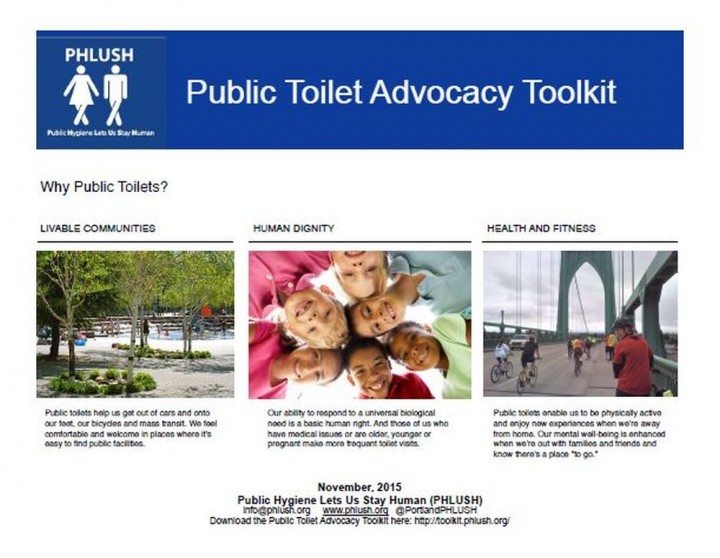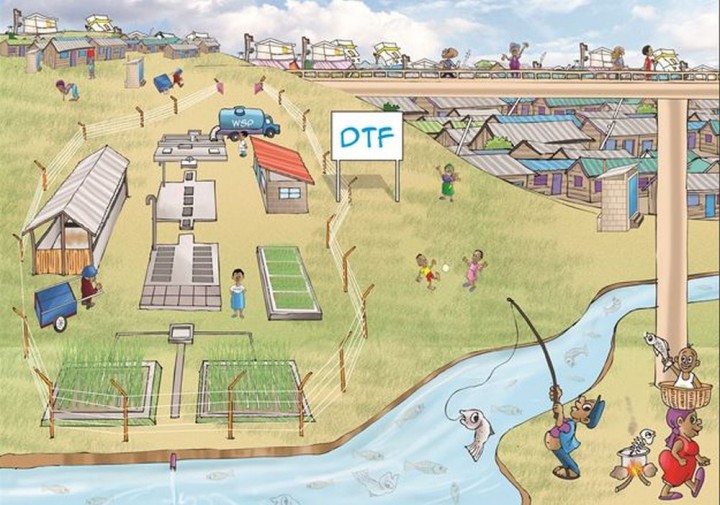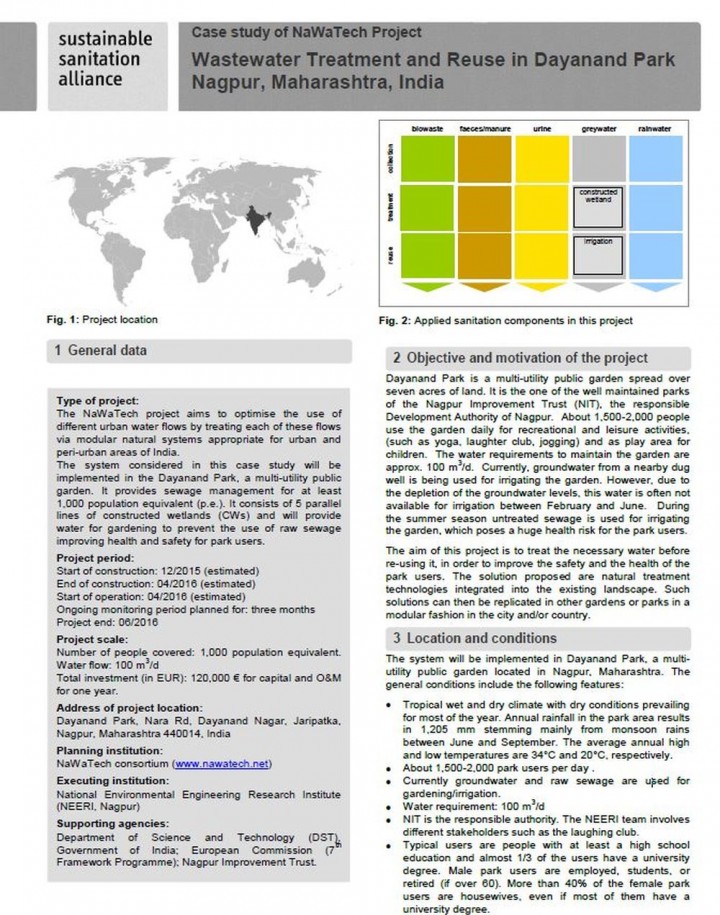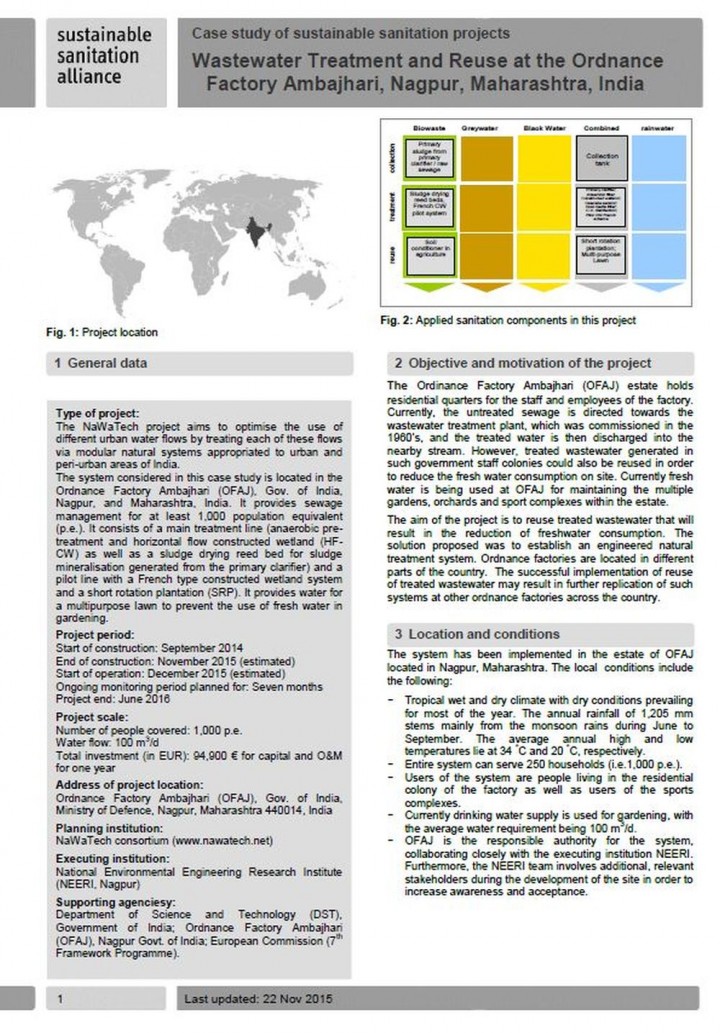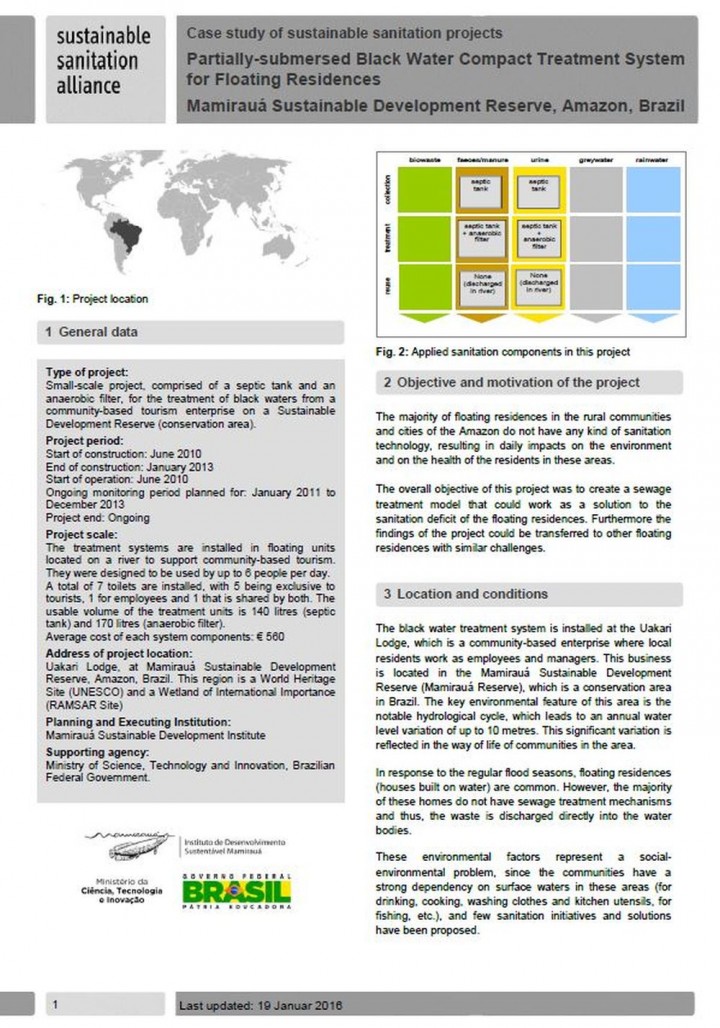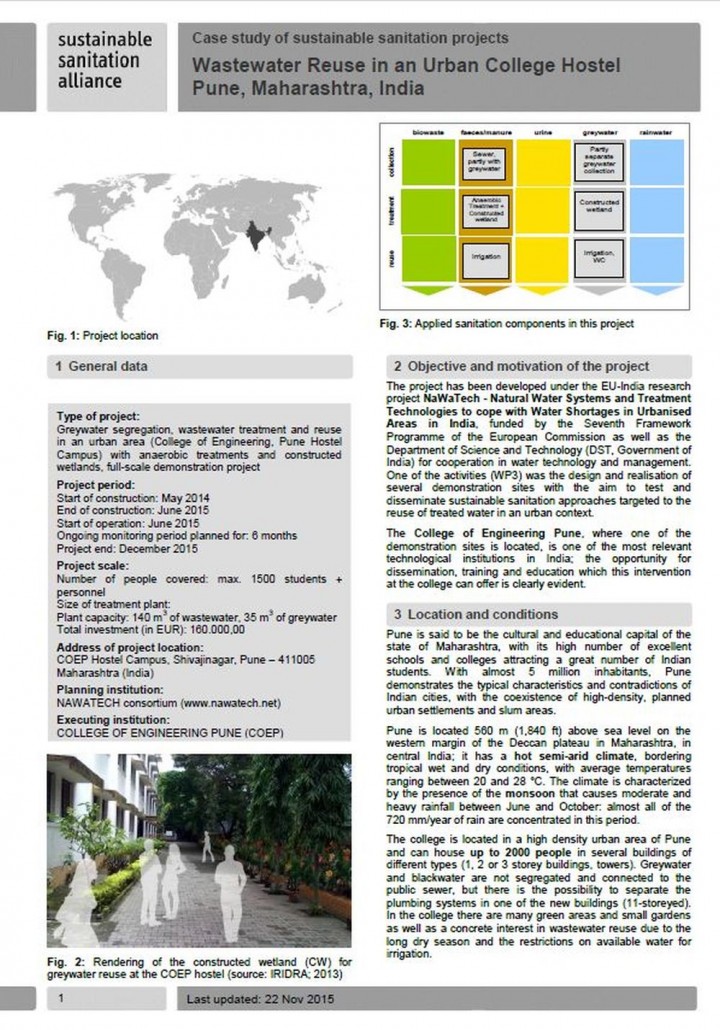Searching for information on Sanitation Workers?
The Sanitation Workers Knowledge + Learning Hub is the best source for all current news, trends, articles and updates on sanitation workers rights around the world.
The water safety plan (WSP) approach is widely recognized as the most reliable and effective way to consistently manage drinking-water supplies to safeguard public health. Since the introduction of WSPs in the third edition of the WHO Guidelines for Drinking-water Quality (GDWQ) and the International Water Association (IWA) Bonn Charter for Safe Drinking Water in 2004, a significant number of …
The impact of onsite sanitation on water resources has been the subject of much study with regard to conventional septic tanks and soak-aways. However, research of impacts from rural and peri-urban communities using pit latrines, particularly in underdeveloped countries, has been unconvincing. With the increase in the extension of sanitation services provided by the South African Government …
This regional strategy was developed in 2012 during the nutritional and food crisis in the Sahel. It was updated in 2015. Revised during the 2014 consultation process, it remains an intersectoral guidance strategy that can be adapted to the specific national and local features of each country.
French Version:
http://www.susana.org/en/resources/library/details/2297
La situation de l’assainissement et de l’approvisionnement en eau potable des quartiers non lotis et périphériques des communes urbaines du Burkina Faso n’est pas suffisamment connue et rend difficile la planification des différents programmes et projets dans ces zones. En effet, il n’existe pas pour le moment d’informations précises sur l’AEPA des populations vivant dans ces …
Water, sanitation, and hygiene can have a profound effect on health and nutrition. A growing base of evidence on the link between sanitation, child height, and well-being has come at an opportune time, when the issue of sanitation and nutrition in developing countries has moved to the top of the post-2015 development agenda.
The following documents focus on waste emptying, collection and transport and were all developed in the context of GIZ’s Water Sector Reform Programme in Kenya.
You will find the following documents for download here:
- Technical drawing of 3 wheeler unit for the transportation of dry human excreta waste
This paper sets out findings from WaterAid’s research in East Asian states on the political economy of sanitation and hygiene services that delivered total coverage within a generation. The purpose of this research is not to claim blueprints for success – the specifics of each case show the contextual nature of sanitation transformation. However, the intention is to galvanise and frame the …
The purpose of the Public Toilet Advocacy Toolkit is to strengthen the capacity of citizen advocates and City officials to provide and maintain great public toilets that make communities livable, respect human dignity and promote health and well-being. PHLUSH regularly responds to requests from communities throughout North America seeking to increase toilet availability. These seventeen tools are …
This library entry contains key documents involved in the implementation of the UBSUP programme, from the social marketing for improved toilet at household level to the construction and operation of the sanitation infrastructures (toilet and Decentralised Treatment Facility). Note that more documents are available on the SafiSan toolkit located in the WSTF website, see link below.
As an …
Water is key to food security and nutrition. However there are many challenges for water, food security and nutrition, now and in the future, in the wider context of the nexus between water, land, soils, energy and food, given the objectives of inclusive growth and sustainable development. In this context, in October 2013, the Committee on World Food Security (CFS) requested the High Level Panel …
This library entry contains background documents for a grant that Daniel Okello (Phase 1) and Najib B. Lukooya (Phase 2) are leading and which is funded by the Bill and Melinda Gates Foundation.
Further information is also available on the SuSanA discussion forum, see link below.
The main motivation for this project is to demonstrate that polluted water flowing through any stream and river can be treated and recycled for flushing of lavatories in adjacent complexes, for watering the plants in nearby gardens, etc. The recycling of this treated water will help to reduce the load on the fresh water supply in order to cope with water shortages in urbanized areas of …
Dayanand Park is a multi-utility public garden spread over seven acres of land. It is the one of the well maintained parks of the Nagpur Improvement Trust (NIT), the responsible Development Authority of Nagpur. About 1,500-2,000 People use the garden daily for recreational and leisure activities, (such as yoga, laughter club, jogging) and as play area for children. The water requirements to …
The Ordinance Factory Ambajhari (OFAJ) estate holds residential quarters for the staff and employees of the factory. Currently, the untreated sewage is directed towards the wastewater treatment plant, which was commissioned in the 1960’s, and the treated water is then discharged into the nearby stream. However, treated wastewater generated in such government staff colonies could also be reused …
The majority of floating residences in the rural communities and cities of the Amazon do not have any kind of sanitation technology, resulting in daily impacts on the Environment and on the health of the residents in these areas.
The overall objective of this project was to create a sewage treatment model that could work as a solution to the sanitation deficit of the floating residences. …
The project has been developed under the EU-India Research project NaWaTech - Natural Water Systems and Treatment Technologies to cope with Water Shortages in Urbanised Areas in India, funded by the Seventh Framework Programme of the European Commission as well as the Department of Science and Technology (DST, Government of India) for cooperation in water technology and management. One of the …
Tiruchirappalli, also known as Trichy, is one of the largest cities in Tamil Nadu and is known as an important trade, education and pilgrimage centre. The population of city as per the 2011 Census is 916,857. There is sewerage network which covers 59% of the population. Rest of the city is majorly dependent on septic tanks which are generally not adhering to design prescribed by Bureau of Indian …
Agra, the former capital of India is a city on the banks of the river Yamuna in the state of Uttar Pradesh, India. There is sewerage network which covers half of the population. Rest of the city is majorly dependent on septic tanks which are generally not adhering to design prescribed by Bureau of Indian Standards (BIS).
Date of production: 21/10/2015
Last update: 29/01/2016
Gwalior is a historical city in the Indian state of Madhya Pradesh. There is sewerage network covering around 80% of the population. In spite having good sewerage network within the city only 19% of wastewater is safely managed in the city and rest 81%, which also includes 6% of city defecating in open, is shown unsafe in SFD.
Date of production: 13/10/2015
Last update: 23/01/2016
Sixty-four percent of Bikaner’s city (population of 644,406 people) depends on offsite systems, 31% depends on onsite sanitation systems (OSS), mainly septic tanks, while 5% of population practices open defecation. The city has three Sewage Treatment Plants (STPs) where 41% of the waste water is treated but there are not treatment facilities for septage. One private emptier is responsible for …
Archived newsletters of the regular electronic news bulletin from the sustainable sanitation projects. These newsletters were sent to subscribed members involved in initiatives and projects in the field of sanitation.
Discusses news, publications, books, studies, conferences, online information, and events











